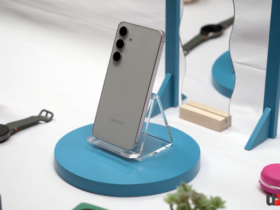Daftar Isi
In an era where technology evolves rapidly, laptops have become indispensable tools for work, communication, and creativity. But what happens when your laptop encounters a glitch, a broken component, or simply needs an upgrade? Laptop repairability emerges as a critical factor, influencing not only our wallets but also our environmental impact. Let’s dive into the world of laptop repairability, exploring which brands prioritize user-friendly designs and empower consumers to take charge of their devices.
Laptop Repairability Assessment Criteria
When evaluating a laptop’s repairability, several factors come into play:
- Modularity: Repair-friendly laptops feature modular designs. Components like RAM, storage drives, and batteries should be easily accessible and replaceable. Brands that embrace modularity allow users to extend the lifespan of their devices without professional intervention.
- Availability of Replacement Parts: A repairable laptop relies on readily available replacement parts. Brands that maintain a supply chain for components ensure that users can fix their laptops without hunting down obscure parts or waiting weeks for delivery.
- Manufacturer Support: Brands that actively support repair efforts provide comprehensive repair manuals, schematics, and diagnostic tools. When manufacturers collaborate with repair communities, everyone benefits.
Read More: Business Laptop: Examining Laptops for Professional-Grade Users
iFixit’s Laptop Repairability Scores
iFixit, the go-to resource for gadget teardowns and repair guides, assigns repairability scores to laptops. These scores range from zero (virtually unrepairable) to ten (easiest to repair). Let’s explore how some brands fare:
- Dell: A Repair Champion
Dell Technologies has emerged as a true advocate for repairability in the tech industry. Their commitment to extending product lifecycles, reducing e-waste, and promoting a circular economy is commendable. Let’s delve into the reasons why Dell stands out as a repair champion:
- Circular Economy Focus: Dell recognizes that the circular economy is pivotal in addressing global challenges like climate change, waste, and pollution. By emphasizing reduce, reuse, and recycle, they aim to keep products and materials in use for as long as possible. Repair plays a crucial role in achieving this goal.
- Design for Repair: Dell intentionally designs products with features that facilitate easier repair. Their recent concept, Concept Luna, envisions a future where components are immediately accessible, replaceable, and reusable. While ambitious, this concept draws inspiration from Dell’s decades-long work in this space. Features like snap fits, uniform screws, and compatible paints enhance repairability.
- Empowering Customers: Dell empowers customers to repair their devices. They provide easy access to resources, spare parts, and support. Online manuals, downloads, and parts lists enable users to maintain and repair their products. The Dell AR Assistant, an augmented reality app, offers step-by-step part replacement instructions for nearly 100 Dell products.
- Safety and Privacy: Dell ensures that repair options prioritize safety, quality, data security, and privacy. Their commitment extends across global markets, making repair accessible and reliable.
- Sustainability Synergy: Repairability dovetails with Dell’s broader sustainability goals. Luna, a laptop designed for disassembly and repurposing, exemplifies this synergy. By aiming to reuse or recycle one equivalent product for every product sold, Dell demonstrates its commitment to a greener future.
In summary, Dell’s dedication to repairability not only benefits customers but also contributes significantly to a more sustainable and environmentally responsible tech industry
- Asus: Balancing Performance and Laptop Repairability
- Asus strikes a balance between performance and repairability. Their ZenBook and VivoBook lines offer sleek designs without sacrificing accessibility. Users appreciate the ability to upgrade RAM, storage, and batteries.
- HP and Acer: Mid-Range Repairability
- HP and Acer laptops fall in the mid-range repairability category. While not as modular as Dell or Asus, they still provide reasonable access to internals. Brands like HP emphasize user-friendly designs in their EliteBook and Spectre series.
- Lenovo: A Mixed Record
- Lenovo’s ThinkPad series enjoys a reputation for durability and reliability. However, repairability varies across models. Some ThinkPads excel, while others present challenges due to soldered components or proprietary designs.
- Apple: Struggle with Repairability
- Apple’s MacBooks consistently receive low repairability scores. Soldered RAM, glued batteries, and proprietary screws hinder DIY repairs. Independent repair shops often face barriers when servicing Apple laptops.
The User Experience vs. Laptop Repairability Dilemma
Manufacturers walk a tightrope between aesthetics and practicality. Slim, sleek laptops appeal to consumers, but these designs often sacrifice repairability. As consumers, we must weigh our desire for thin, elegant devices against our responsibility to reduce electronic waste.
Conclusion
Laptop repairability matters, and its impact extends beyond individual users. Here’s why:
- Device Longevity and Cost Savings:
- Repairable laptops allow users to extend the lifespan of their devices. When a component fails, a repairable laptop enables straightforward fixes—whether it’s replacing a battery, upgrading RAM, or fixing a broken screen.
- By avoiding premature replacements, users save money on purchasing new laptops. Repair costs are often more budget-friendly than buying a brand-new device.
- Environmental Impact and Electronic Waste Reduction:
- The electronics industry contributes significantly to electronic waste (e-waste). Repairable laptops help combat this problem by reducing the number of discarded devices.
- When laptops are designed for repairability, fewer devices end up in landfills. Components can be recycled or repurposed, minimizing the environmental footprint.
- Preserving Valuable Resources:
- Laptops contain valuable materials such as metals, plastics, and rare earth elements. Repairability ensures that these resources remain in circulation.
- Sustainable, repairable devices may help consumers feel they’re contributing less to long-term environmental problems. Additionally, laptops often remain relevant for at least five years, and high-end models can serve for a decade or more1.
In summary, choosing a repair-friendly laptop isn’t just about convenience—it’s a conscious decision that benefits both users and the planet. Let’s advocate for laptops that prioritize repairability and contribute to a more sustainable tech ecosystem.
































